The 2JZ engine is legendary for a reason. It’s like that dependable friend who surprises you every time with hidden talents. But if you want to push this powerhouse beyond stock limits, you need the right upgrades to back it up. Simply put, not all mods are created equal. Some will give you a quick thrill, while others build a foundation for long-lasting performance and reliability. The key is knowing which parts to bolt on first and when to dive into internal upgrades.
Think of the 2JZ as a finely tuned orchestra. Each component must play its part perfectly to create a symphony of power and durability. Start with the basics—intake, exhaust, and intercooler upgrades—which are like tuning your instruments before the big performance. These bolt-ons improve airflow and cooling, allowing your engine to breathe better and work more efficiently. You’ll feel the difference immediately, with smoother throttle response and a noticeable bump in horsepower.
Next up, turbochargers. Picking the right turbo is like choosing the right gear for your climb. Too small, and you’ll spin your wheels; too big, and you risk losing control. The perfect turbo balances spool time with top-end power, letting you enjoy both street-friendly drivability and track-ready punch. Pair it with an upgraded fuel system to keep the engine fed, and you’re already on your way to a reliable high-performance build.
But power isn’t just about speed—it’s about control and longevity. That’s where internal upgrades like forged pistons and stronger rods come into play. These parts are the unsung heroes, quietly holding everything together when the boost pressure rises and the engine is pushed to its limits. Skimp here, and you’re asking for trouble down the road.
Finally, don’t overlook cooling and reliability mods. A bigger radiator or oil cooler might not sound exciting, but they’re crucial for keeping temperatures in check during spirited driving. Upgraded head studs and gaskets ensure your engine stays sealed tight, preventing leaks and failures that can ruin your day—and your wallet.
In short, upgrading your 2JZ isn’t just about chasing numbers on a dyno sheet. It’s about crafting a balanced, reliable machine that can handle whatever you throw at it. With the right combination of bolt-ons, turbo choices, and internal reinforcements, your 2JZ will reward you with power, durability, and a driving experience that’s nothing short of thrilling.
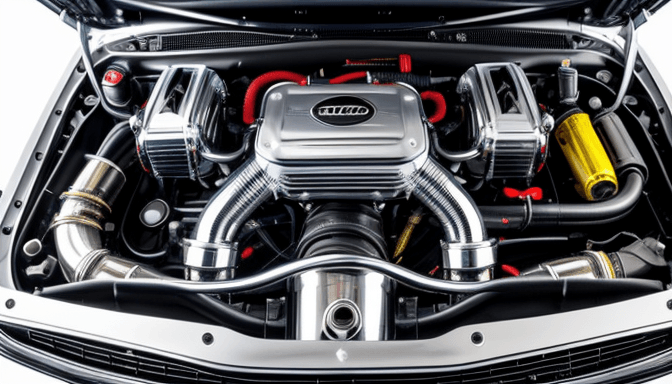
Top Bolt-On Mods Every 2JZ Owner Should Start With
If you’re diving into the world of 2JZ upgrades, the first step is all about those bolt-on mods that bring power and efficiency without tearing your engine apart. Think of these as the low-hanging fruit—easy to install but packed with punch. You don’t need to be a mechanic wizard to feel the difference these parts make. Imagine your engine breathing easier and pushing more power with just a few smart tweaks.
First up, the intake system. Swapping out the factory air intake for a high-flow cold air intake is like giving your 2JZ fresh lungs. Cooler, denser air floods in, which means better combustion and more horsepower. It’s simple, affordable, and you’ll notice how your engine responds faster. Plus, it’s one of those mods that feels good every time you hit the gas.
Next, the exhaust system. Upgrading to a performance cat-back exhaust or even a full turbo-back setup reduces backpressure. Why does that matter? Less backpressure means your engine can expel exhaust gases more efficiently, which translates to smoother power delivery and a little extra kick. You’ll also love the deeper, more aggressive sound that comes with it—it’s like your car finds its voice.
Then there’s the intercooler. The stock intercooler does a decent job, but upgrading to a larger, more efficient front-mount intercooler keeps intake air temperatures down when you’re pushing boost. Cooler air is denser air, and denser air means more power. It’s a subtle change that pays off big during spirited driving or track days.
What ties all these bolt-ons together? They work in harmony to improve airflow—both in and out of the engine. Better airflow means your 2JZ can burn fuel more efficiently, leading to noticeable gains without opening the engine. It’s like tuning a musical instrument; each piece needs to be just right to create a perfect symphony of power and reliability.
Of course, no bolt-on upgrade is complete without considering the fuel system and engine management, but those come next. For now, focus on these bolt-ons as your foundation. They’re the mods that give you immediate satisfaction and set the stage for bigger, more ambitious builds down the road.
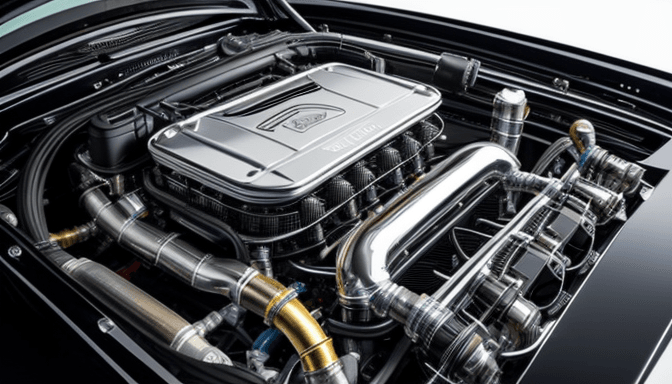
Choosing the Right Turbocharger for Your Power Goals
Picking the perfect turbocharger for your 2JZ engine isn’t just about grabbing the biggest or flashiest model you find. It’s like choosing the right pair of shoes for a marathon—you want something that fits your pace, style, and the distance you plan to cover. If you go too big, you might end up with lag that kills your fun. Too small, and you’ll hit a power ceiling before you even get started.
Think about what you want from your build. Are you chasing quick spool-up for that snappy throttle response? Or is your goal to crank out high horsepower numbers for the strip or track? These questions shape your turbo choice. For example, a smaller turbocharger will spool faster, giving you that instant boost feeling, but it might struggle to push beyond 400-500 horsepower efficiently. On the flip side, a larger turbo can handle big power but often feels sluggish until it hits higher RPMs.
Here’s a quick breakdown of how different turbo sizes play out on the 2JZ:
| Turbo Size | Spool Characteristics | Power Range | Best For |
|---|---|---|---|
| Small (e.g., TD05) | Fast spool, minimal lag | 300-450 HP | Street driven, daily use |
| Medium (e.g., GTX2867) | Balanced spool and top-end power | 400-600 HP | Street and occasional track |
| Large (e.g., GTX3076 or higher) | Slower spool, high top-end power | 600+ HP | Race builds, drag strip |
But turbo size isn’t the whole story. You also need to think about your intended use. Daily drivers benefit from quick spool turbos that keep the engine responsive in stop-and-go traffic. On the other hand, if you’re building a weekend warrior or a dedicated race car, the lag from a bigger turbo might be worth the massive power gains down the line.
One thing I’ve learned from personal experience is that matching your turbo to your supporting mods is key. Throwing a massive turbo on a stock fuel system or weak internals is like putting a rocket engine on a bicycle frame—it won’t end well. Always consider your fuel injectors, fuel pump, and engine internals when deciding on turbo size.
In the end, choosing the right turbocharger comes down to balancing your power dreams with real-world needs. It’s about harmony, not just horsepower numbers. So, take your time, do your homework, and don’t be afraid to ask for advice from folks who’ve been down this road before. Your 2JZ will thank you with smooth, reliable power that hits just right every time.
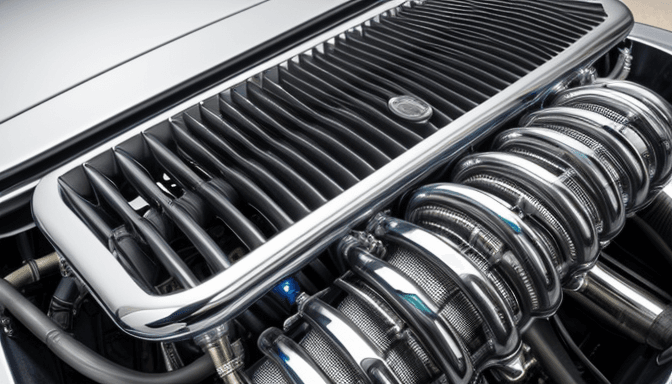
Intercooler and Intake Mods for Cooler, Denser Air
When it comes to squeezing every bit of power from your 2JZ engine, the air you feed it matters—a lot. Think of your engine as a hungry beast that thrives on cool, dense air. The denser the air, the more oxygen it carries, and oxygen is the secret sauce for combustion. Without enough of it, your engine’s performance flatlines, no matter how much fuel you throw in.
Upgrading the intercooler is like giving your engine a breath of fresh mountain air on a hot summer day. Stock intercoolers often struggle when the boost climbs high, letting intake air temperatures soar. Hot air is thin air, and thin air means your engine is choking. A bigger, more efficient intercooler cools this air before it hits the combustion chamber, packing it tighter with oxygen molecules.
Now, imagine your intake system as the engine’s front door. If it’s narrow or clogged, air flow suffers. Swapping out the factory intake for a high-flow cold air intake lets your engine gulp down air more freely. This not only lowers air temperature but also improves throttle response and adds a bit of growl that every enthusiast loves.
But here’s the kicker: it’s not just about slapping on the biggest intercooler or intake filter you can find. Balance is key. Oversized parts can cause lag or disrupt airflow dynamics, making your setup less efficient. The goal is to create a smooth, cool, and dense air path that matches your turbo and fuel system perfectly.
For those looking to get technical, consider the following when upgrading:
- Core size and design: Larger cores cool better but must fit your engine bay without restricting airflow.
- Material quality: Aluminum cores with bar-and-plate designs tend to offer superior cooling over cheaper alternatives.
- Intake tubing: Smooth, mandrel-bent tubing reduces turbulence and helps maintain consistent airflow.
In my own build, swapping to a high-quality front-mount intercooler and a cold air intake made a night-and-day difference. The engine felt more responsive, and the power hit was cleaner and stronger. Plus, the cooler air kept things safer under boost, which is a win-win.
In the end, intercooler and intake mods aren’t just about raw numbers—they’re about making your 2JZ breathe easier, last longer, and perform better. It’s a simple upgrade that pays off big when done right.
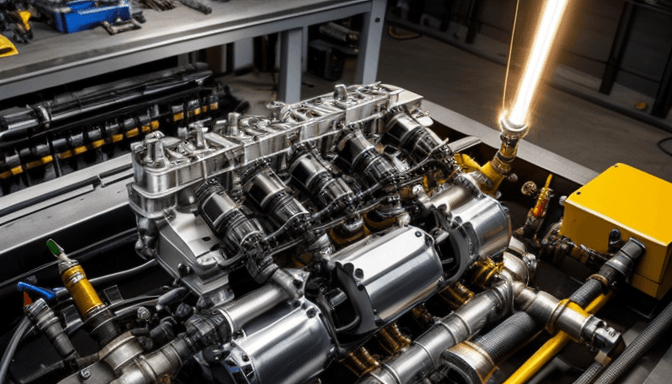
Upgrading the Fuel System: Injectors, Pumps, and Rails
When it comes to pushing your 2JZ engine beyond its stock limits, the fuel system often becomes the unsung hero. Think of it like the heart of your car’s power delivery. Without enough fuel flowing smoothly, all the other upgrades won’t reach their full potential. Upgrading your injectors, fuel pump, and rails isn’t just about adding parts—it’s about creating a reliable lifeline that keeps your engine fed and happy under pressure.
Let’s start with injectors. Stock injectors are designed for factory power levels, so when you crank up the boost or add bigger turbos, they simply can’t keep up. Upgrading to high-flow injectors ensures your engine gets the right amount of fuel, preventing lean conditions that can cause serious damage. Imagine trying to fill a swimming pool with a garden hose—it’s slow and inefficient. Bigger injectors are like switching to a fire hose, delivering fuel fast and steady.
Next up, the fuel pump. This component is the engine’s fuel delivery workhorse, pushing gasoline from the tank to the injectors. If your pump can’t keep pace with your injectors, you’ll starve the engine at high RPMs, causing hesitation or worse, engine knock. Upgrading to a high-capacity fuel pump is crucial for maintaining consistent fuel pressure and volume, especially when you’re aiming for those sweet high-horsepower numbers.
Fuel rails might seem like minor players, but they’re essential for stable fuel delivery. Stock rails can become a bottleneck when you increase fuel flow, leading to uneven pressure and inconsistent spray patterns. Swapping in aftermarket rails designed for higher flow rates ensures every injector gets equal fuel pressure, helping your engine run smooth and strong.
Here’s a quick breakdown of what to consider when upgrading your fuel system:
- Injector Size: Match to your horsepower goals; too small means starvation, too big can cause drivability issues.
- Fuel Pump Capacity: Should support injector flow and expected boost levels.
- Fuel Rails: Choose ones designed for high flow and durability.
Upgrading these parts might sound technical, but it’s really about balance. Just like a band needs every instrument in tune, your fuel system components must work together seamlessly. I’ve seen builds where a simple fuel pump upgrade made all the difference—power delivery became smooth, and the engine felt alive in a way it never had before.
In the end, the fuel system is your engine’s bloodline. You want it strong, steady, and ready to support your 2JZ’s ambitions. Skimp here, and you risk losing power or worse, damaging your engine. Invest smartly, and your 2JZ will reward you with reliable, thrilling performance every time you hit the gas.
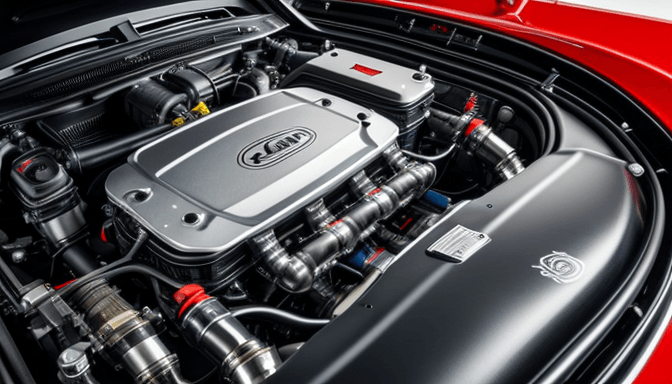
Engine Management Options for Tuning and Control
When it comes to dialing in your 2JZ engine, the engine management system is the brain behind the operation. Think of it as the conductor of an orchestra, ensuring every part plays in perfect harmony. Without precise control over fuel, ignition timing, and boost pressure, even the best hardware upgrades can fall flat or worse, cause damage. So, what are your options?
First off, factory ECUs are decent for stock or mildly tuned setups, but they hit a wall when you start pushing power limits. That’s where standalone engine management systems (EMS) come into play. These devices give you full control over every parameter, letting you fine-tune your engine’s behavior to suit your specific build and driving style. It’s like switching from a basic calculator to a full-blown computer—suddenly, you have endless possibilities.
Popular EMS choices for the 2JZ include brands like AEM, Haltech, and MoTeC. Each offers a range of features, but the key is their ability to manage fuel delivery and ignition timing with pinpoint accuracy. This means smoother power delivery, better throttle response, and most importantly, a safer engine under high boost.
But tuning isn’t just about raw power. It’s about balance. For example, if your turbocharger kicks in too hard or too late, it can cause lag or even engine knock. A good EMS helps you manage boost curves so the power comes on strong but controllably. Plus, many systems support data logging, so you can review how your engine performs in real time and tweak settings accordingly. It’s like having a coach watching your every move, helping you improve lap after lap.
Now, if you’re not ready for a full standalone system, piggyback ECUs offer a middle ground. They work alongside your stock computer to adjust fuel and timing without replacing the entire system. It’s a bit like adding a turbocharger to your car—boost without a full engine overhaul. However, piggybacks can be limited in scope compared to standalones, so consider your long-term goals.
At the end of the day, your engine management setup should match your build’s ambition. Whether you’re cruising with mild mods or chasing serious horsepower, having the right tuning tools means you’re not just guessing—you’re in control. And control is everything when pushing the legendary 2JZ to its limits.
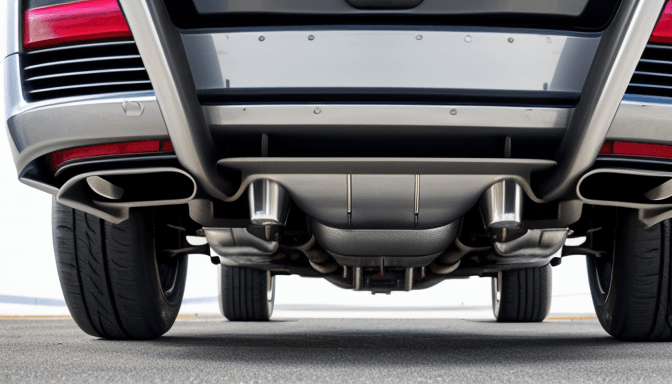
Exhaust System Upgrades for Better Flow and Performance
When it comes to squeezing every last bit of power from your 2JZ engine, the exhaust system plays a starring role. Think of it as the engine’s way of breathing out — if it’s clogged or restricted, your engine struggles to exhale, and that’s where power leaks happen. Upgrading your exhaust isn’t just about making your car sound louder or meaner; it’s about freeing up that exhaust flow so the engine can perform at its best. Imagine trying to run with a straw in your mouth — frustrating, right? That’s what a stock exhaust can feel like on a tuned 2JZ.
One of the simplest yet most effective upgrades is increasing the diameter of the exhaust piping. Larger pipes reduce backpressure, allowing exhaust gases to exit quicker and smoother. But bigger isn’t always better — too large, and you risk losing low-end torque, which means your car might feel sluggish off the line. It’s about balance, and for most builds, moving to a 3-inch or 3.5-inch system hits that sweet spot.
High-flow catalytic converters are another game-changer. They replace the restrictive factory cats with more open designs that still keep emissions in check but don’t choke your engine. This means you get cleaner, faster exhaust flow without sacrificing legality in many cases. Paired with performance mufflers designed to minimize flow restriction, your 2JZ can breathe easier and sound sharper without that annoying drone on the highway.
Don’t overlook the importance of exhaust headers either. Upgrading to tubular headers can dramatically improve scavenging — that’s the process where exiting exhaust gases help pull in fresh air for the next combustion cycle. Better scavenging equals better power and throttle response. It’s like giving your engine a well-tuned set of lungs instead of a stuffy pair.
Let’s break down some key exhaust upgrades for your 2JZ:
- Larger diameter piping: Typically 3″ to 3.5″ for balanced flow and torque.
- High-flow catalytic converters: Reduce restriction while meeting emissions.
- Performance mufflers: Improve sound and flow without excess noise.
- Aftermarket headers: Enhance scavenging for better power delivery.
Upgrading your exhaust system isn’t just a bolt-on mod; it’s a crucial step in unlocking your 2JZ’s true potential. By easing the engine’s exhale, you’ll notice sharper throttle response, increased horsepower, and a more aggressive tone that feels as good as it sounds. So, if you’re serious about performance, don’t let your exhaust hold you back — give your 2JZ the breathing room it deserves.
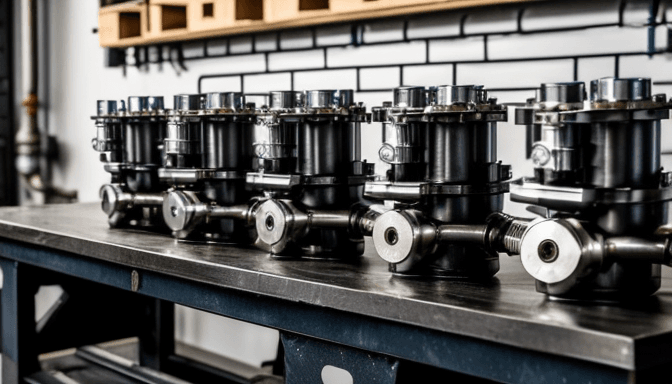
Must-Have Internal Engine Mods for High-Boost Builds
When you’re pushing your 2JZ engine to handle high boost levels, you can’t just rely on stock parts to keep up. It’s like asking a family sedan to perform like a race car—it’s just not built for that kind of stress. That’s where internal engine modifications come into play. These upgrades are the backbone of any serious high-boost build, ensuring your engine doesn’t just survive but thrives under pressure.
First off, forged pistons are a must-have. Unlike the factory cast pistons, forged ones are made from stronger materials and can withstand the intense heat and pressure that comes with high boost. Think of them as the heavyweight champions inside your engine, ready to take the hits without cracking. Alongside pistons, upgrading to forged connecting rods is crucial. Stock rods might bend or break under extreme loads, but forged rods offer the toughness and durability needed for sustained power delivery.
Crankshafts also deserve attention. The stock crankshaft is decent for moderate builds, but once you crank up the boost, it can develop stress fractures or even snap. A forged or billet crankshaft provides the rigidity and strength to handle those insane RPMs and torque spikes. It’s the backbone that keeps everything turning smoothly, no matter how hard you push.
Now, you might wonder, “Are these upgrades really necessary if I’m just aiming for moderate power?” The answer is simple: if you want reliability and peace of mind, yes. High-boost engines face extreme forces, and cutting corners here is like building a house on shaky ground. You don’t want your engine to fail just when you’re hitting your stride on the track or the street.
Here’s a quick rundown of the critical internal mods for high-boost 2JZ builds:
- Forged Pistons: Handle heat and pressure better than stock.
- Forged Connecting Rods: Provide strength to withstand high loads.
- Forged or Billet Crankshaft: Ensures durability at high RPMs and torque.
- Upgraded Bearings and Gaskets: Prevent premature wear and leaks under stress.
Upgrading these components might seem like a big step, but it’s the difference between an engine that’s a ticking time bomb and one that’s a reliable powerhouse. Imagine driving with confidence, knowing your engine can handle the boost without breaking a sweat. That’s the kind of peace of mind every 2JZ enthusiast dreams of.
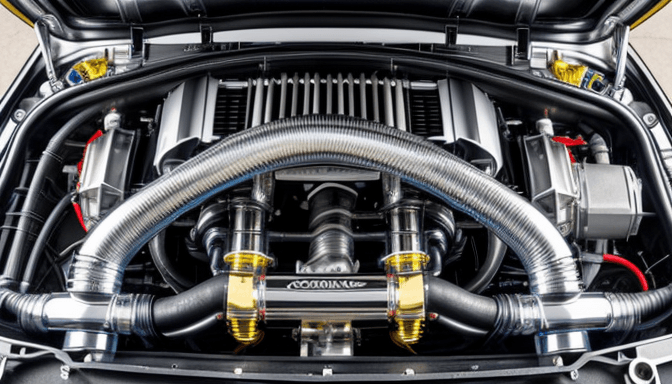
Cooling System Upgrades to Handle More Heat
When you push your 2JZ engine harder, it naturally spits out more heat. And heat? It’s the enemy of power and reliability. Imagine trying to run a marathon in a thick winter coat—you’d overheat fast. That’s what your engine feels like without proper cooling upgrades. Upgrading the cooling system isn’t just a nice-to-have; it’s a must if you want your build to last and perform consistently.
Stock cooling parts are designed for everyday driving, not for the kind of stress a tuned 2JZ faces. Once you start cranking up boost or extending track sessions, the factory radiator and oil cooler can’t keep up. This leads to higher engine temps, which can cause knock, reduce power, and even damage critical components. To avoid this, many enthusiasts turn to bigger, more efficient radiators and upgraded oil coolers that handle heat like pros.
One upgrade that often gets overlooked is the thermostat. It might sound simple, but swapping out the factory thermostat for a lower temperature one helps the engine start cooling sooner, keeping temps in check before they spike. It’s like giving your engine a head start in the heat battle.
Beyond that, upgrading your coolant hoses and clamps to high-quality, heat-resistant materials ensures your system stays sealed and leak-free under pressure. Nothing kills performance faster than a coolant leak or a burst hose during a spirited drive.
Here’s a quick rundown of key cooling upgrades to consider:
- Larger aluminum radiator: More surface area means better heat dissipation.
- High-flow electric fans: These pull more air through the radiator, especially at low speeds.
- Upgraded oil cooler: Keeps oil temps down, which protects internal engine parts.
- Lower temperature thermostat: Helps maintain optimal engine temperature.
- Reinforced coolant hoses and clamps: Prevent leaks and burst under pressure.
Think of your cooling system as the unsung hero of your 2JZ build. Without it, all the horsepower in the world won’t matter if your engine overheats and throws a rod. I’ve seen builds with killer mods fail simply because they ignored cooling. Don’t be that guy. Invest in solid cooling upgrades early on, and your engine will thank you with consistent, reliable power every time you hit the gas.
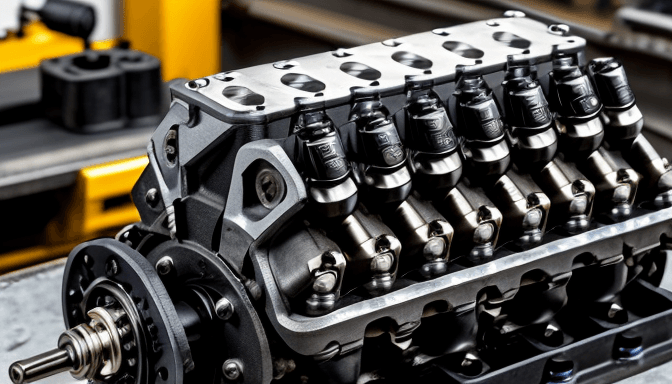
Reliability Mods: Head Studs, Bearings, and Gaskets
When you’re pushing the 2JZ engine beyond its factory limits, reliability becomes the name of the game. Imagine the engine as a finely tuned orchestra—every part needs to perform perfectly, or the whole symphony falls apart. That’s where upgrading components like head studs, bearings, and gaskets steps in to keep your build solid and trustworthy.
Start with the head studs. Stock head bolts can stretch and weaken under high boost and extreme heat, risking head gasket failure or worse, warping the cylinder head. Swapping these out for high-quality, aftermarket head studs—usually made from stronger materials like ARP 2000 or similar alloys—means your cylinder head stays firmly clamped to the block. This upgrade is like reinforcing the foundation of a house before adding a second story; without it, the whole structure is at risk.
Next up, bearings play a silent but critical role. These little guys handle the brutal forces inside the engine, especially when you crank up the boost and revs. Using upgraded bearings designed for high-performance applications reduces friction and wear, which means fewer surprises down the road. Think of them as the engine’s shock absorbers—they smooth out the pounding and keep everything spinning smoothly.
Then there are gaskets, the unsung heroes sealing all the vital fluids and pressures inside your engine. A blown gasket can quickly turn a thrilling build into a costly headache. Investing in high-quality, multi-layer steel (MLS) head gaskets and reinforced seals ensures your engine maintains perfect compression and prevents leaks—even under extreme conditions. It’s like sealing a jar tightly to keep the contents fresh; no leaks, no mess.
In fact, these reliability mods often work best when combined. For example, pairing upgraded head studs with MLS gaskets creates a rock-solid seal that stands up to high boost pressures. Meanwhile, premium bearings keep the rotating assembly healthy, allowing you to push the engine harder without fear.
In my own experience tuning a 2JZ build, skipping these upgrades was a costly mistake. Early on, I learned that the stock head bolts just couldn’t keep up, leading to leaks and lost power. After switching to quality head studs and gaskets, the engine felt more confident, ran cooler, and held boost like a champ. Trust me, these mods aren’t just optional—they’re essential for anyone serious about a reliable high-performance 2JZ.
Frequently Asked Questions
- What are the best bolt-on upgrades for a 2JZ engine?If you’re looking to get quick power gains without opening up your engine, start with bolt-on mods like a high-flow intake, upgraded intercooler, and a performance exhaust system. These parts improve airflow and efficiency, giving your 2JZ a noticeable boost without the headache of internal work.
- How do I choose the right turbocharger for my 2JZ build?Picking the perfect turbo depends on your horsepower goals and driving style. Smaller turbos spool faster for quick response, while bigger ones deliver massive power but with some lag. Think of it like choosing between a sprinter and a marathon runner—both excel, but in different ways!
- Why is upgrading the intercooler important?Cooler air means denser air, and denser air means more power. Upgrading your intercooler helps reduce intake temperatures, preventing heat soak during hard runs. It’s like giving your engine a refreshing breath of fresh air, keeping performance sharp and consistent.
- What fuel system upgrades are necessary for higher horsepower?When pushing your 2JZ beyond stock power, stock injectors and pumps often can’t keep up. Upgrading to high-flow injectors, a stronger fuel pump, and beefier fuel rails ensures your engine gets the fuel it craves, preventing lean conditions and engine damage.
- Do I really need internal engine mods for high-boost setups?Absolutely! Running high boost puts insane stress on pistons, rods, and crankshafts. Forged internals are like armor for your engine, protecting it from cracks and failures when the pressure climbs. Skipping this is like walking a tightrope without a safety net.
- How can I improve engine management for my 2JZ?Upgrading to a standalone engine management system or a quality ECU tune lets you control fuel, ignition, and boost precisely. It’s like giving your engine a brain upgrade—optimizing performance while keeping it safe under extreme conditions.
- What cooling upgrades help keep the 2JZ running reliably?When you crank up the power, your engine heats up like a furnace. Larger radiators, oil coolers, and better thermostats act like a high-powered air conditioner, keeping temps in check and preventing overheating during intense driving or track sessions.
- Are head studs really necessary for reliability?Yes! Stock head bolts can stretch or fail under high boost. Upgraded head studs clamp the cylinder head more securely, preventing leaks and head gasket failures. Think of them as the strong glue that holds your engine together under pressure.
- What exhaust upgrades give the best performance gains?Swapping to larger diameter piping, high-flow catalytic converters, and performance mufflers reduces backpressure and improves exhaust flow. This helps your engine breathe easier, translating into smoother power delivery and a more aggressive sound.
- Can I build a reliable 2JZ without spending a fortune?Definitely! Focus on key upgrades like bolt-ons and essential internal parts that match your power goals. Smart planning and quality parts go a long way. Remember, it’s not just about throwing money at the engine but making thoughtful choices that balance power and reliability.